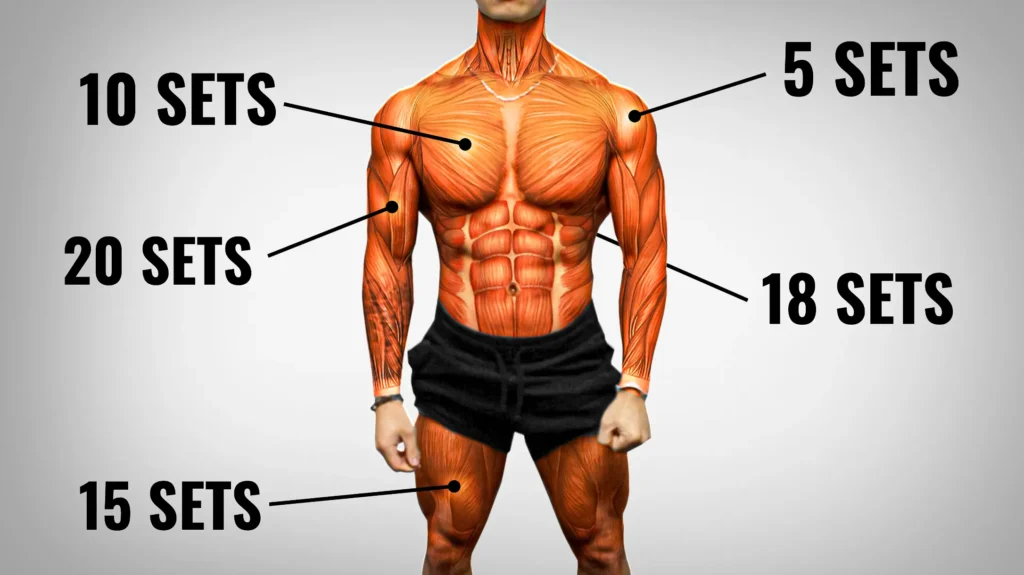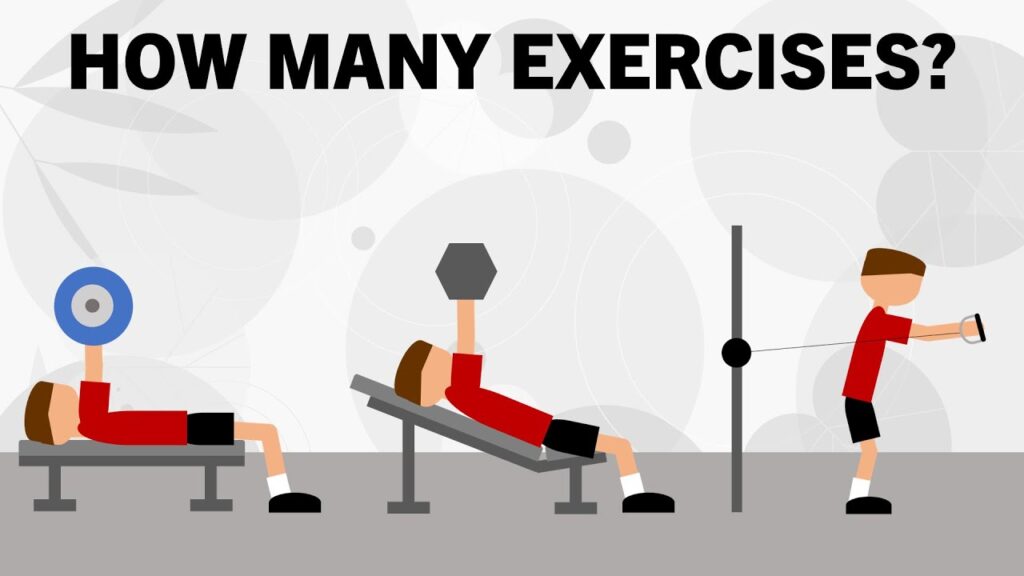How Many Exercises Per Workout? – If you’ve ever walked into the gym unsure of how many exercises to do, you’re not alone.
Whether you’re a beginner or a seasoned lifter, knowing how many exercises per workout to include is key for making progress, avoiding burnout, and staying consistent.
This guide will help you understand the ideal number of exercises based on your fitness goals, training split, and experience level—so you can train smart, not just hard.
Why Exercise Volume Matters
How Many Exercises Per Workout? – When it comes to resistance training, more isn’t always better. The number of exercises you do affects
- Muscle fatigue and recovery
- Workout duration and efficiency
- Progression and overload
- Injury risk
Doing too few exercises may lead to undertraining, while too many can result in overtraining and slower recovery. The sweet spot? It’s about quality over quantity.
How Many Exercises Per Workout Is Ideal?
How Many Exercises Per Workout?- The ideal number depends on your training goals and the type of workout you’re doing.
For General Fitness
3–5 exercises per workout
Focus: Overall strength, endurance, and movement quality.
Split: Full-body or upper/lower body workouts.
Time-efficient and beginner-friendly.
For Muscle Growth (Hypertrophy)
4–6 exercises per workout
Focus: Targeting different parts of the muscle group with volume and variation.
Split: Push/pull/legs, bro splits, or upper/lower.
Includes compound lifts + isolation movements.
For Strength Training
3–4 compound exercises
Focus: Low rep, high intensity.
Exercises are typically compound (e.g., squat, deadlift, bench press).
Accessory work is minimal but purposeful.
For Weight Loss or Conditioning
3–6 exercises in circuits
Focus: Full-body movement, high reps, minimal rest.
Often involves supersets or circuit training.
Combine strength and cardio for calorie burn.
Factors That Affect Your Exercise Count
It’s not one-size-fits-all. Here’s what you should consider when deciding how many exercises to include:
- Your Experience Level
Beginners: 3–4 basic movements per session.
Intermediates: 4–6 exercises with more complexity.
Advanced: Up to 7 exercises, including varied angles and advanced techniques.
- Training Split
Full-Body Workout: 4–5 exercises (cover major muscle groups).
Upper/Lower Split: 4–6 exercises per day.
Body Part Split (Bro Split): 5–7 exercises for that one muscle group.
- Workout Time
If you’re working out for 45–60 minutes, you realistically have time for 4–6 well-structured exercises. Any more and you risk fatigue without additional benefit.
- Intensity and Volume
Higher weight = fewer exercises (due to fatigue and recovery).
Lower weight/higher volume = more flexibility for exercise variety.
Example: Effective Workout Structure
Push Day (Chest, Shoulders, Triceps)
Barbell Bench Press (compound)
Dumbbell Shoulder Press (compound)
Incline Dumbbell Press (compound)
Lateral Raises (isolation)
Triceps Pushdowns (isolation)
➡️ Total: 5 exercises
Full-Body Beginner Routine
Dumbbell Rows
Push-ups
Glute Bridges
➡️ Total: 4 exercises
Common Mistakes to Avoid
Overloading with Too Many Exercises
You don’t need 8–10 exercises per session. That can lead to burnout and poor recovery.
Skipping Compound Movements
Compound exercises should form the foundation of your workout. They give you the most bang for your buck.
Neglecting Rest & Recovery
More exercises mean longer sessions, which could reduce overall intensity or recovery quality.
Tips for Structuring Your Workout
Start with compounds, end with isolations.
Prioritize weak areas early in your session.
Keep your workout between 45–75 minutes.
Ensure proper form over volume.
Adjust based on how your body feels.
How Often Should You Switch Exercises?
While it’s good to stick to foundational movements, changing up some exercises every 4–6 weeks can:
Prevent plateaus
Reduce overuse injuries
Keep your workouts mentally engaging
Final Takeaway- How Many Exercises Per Workout?
So, how many exercises should you do per workout?
The answer: It depends. But a good rule of thumb is:
- 3–5 exercises per session for general fitness
- 4–6 for muscle building
- 3–4 for strength focus
- 3–6 for fat loss circuits
Focus on consistent progression, smart programming, and good recovery—and you’ll get stronger, leaner, and more energized, no matter how many exercises you choose.









